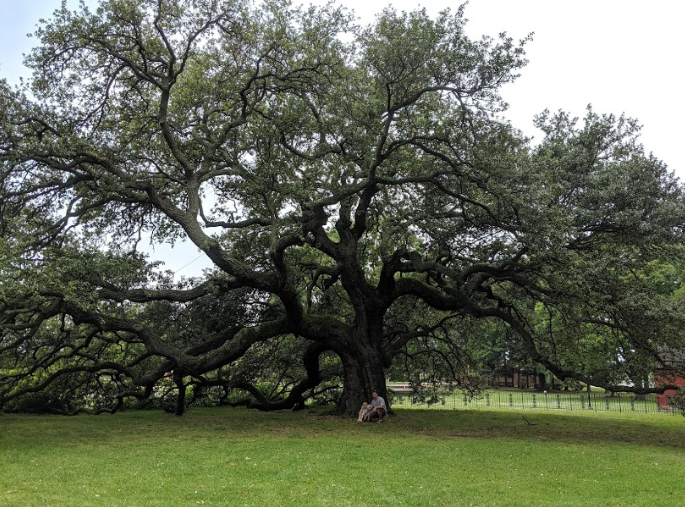African Americans have made significant contributions to the United States and society as a whole. Even more specifically, they have had a major influence in the history of our ship repair industry. The most famous of which was Fredrick Douglas who worked in the Fells Point Shipyard. Here is an excerpt from the Maryland Historical Society about the history of African American caulkers that took place only a short boat ride up the Chesapeake Bay from us in Coastal Virginia:
Fells Point’s most famous caulker was Frederick Douglass. Douglass was an enslaved person living in Fells Point as a servant of Hugh and Sophia Auld, his Eastern Shore master’s relatives. The Aulds hired Douglass out to shipbuilder William Gardner and later Walter Price. He learned the art of caulking and was able to earn high wages of six to seven dollars per week, which he turned over to Auld. Once he had become an accomplished caulker, Douglass convinced Auld to allow him to contract his own work and collect his own wages. However, Douglass still had to pay Auld a sizeable portion of his wages each week in addition to paying for his own room and board and caulking tools. Working as a caulker in Fells Point provided free and enslaved African Americans, including Douglass, a great deal of freedom and opportunity. Perhaps the greatest benefit was the ability to associate with other free blacks and blend into the city’s African American community. Douglass used information gathered and friendships made while working in Fells Point to make possible his escape.
For more information on Frederick Douglass in Baltimore, consult The Narrative of the Life of Frederick Douglass, An Out of Slavery A Primary Source Kit from the Maryland Historical Society American Slave, Douglass’ autobiography.
Source: https://www.mdhs.org/sites/default/files/imagecache/LessonPlanAAMaritime.pdf
Frederick Douglas went on to help found the first ‘Black Shipyard’ by helping Issac Myers to fund the endeavor in 1868. You can still visit places that Douglass built and even interact with a re-creation of the shipyard in Baltimore. Today, we continue to celebrate the tradition of repairing the modern United States fleet with a diverse workforce that more accurately depicts the melting pot of talent and people of our country. Tidewater Staffing pays its respects to all of those who came before us; black, white, short, tall, and acknowledges all the contributions made by people of all walks but especially on this day, Juneteenth, we recognize the African American community for all it has done and continues to do for the industry.
Juneteenth is the oldest known celebration commemorating the ending of slavery in the United States. Dating back to 1865, it was on June 19ththat the Union soldiers, led by Major General Gordon Granger, landed at Galveston, Texas with news that the war had ended and that the enslaved were now free. Note that this was two and a half years after President Lincoln’s Emancipation Proclamation – which had become official January 1, 1863. The Emancipation Proclamation had little impact on the Texans due to the minimal number of Union troops to enforce the new Executive Order. However, with the surrender of General Lee in April of 1865, and the arrival of General Granger’s regiment, the forces were finally strong enough to influence and overcome the resistance.
Later attempts to explain this two and a half year delay in the receipt of this important news have yielded several versions that have been handed down through the years. Often told is the story of a messenger who was murdered on his way to Texas with the news of freedom. Another, is that the news was deliberately withheld by the enslavers to maintain the labor force on the plantations. And still another, is that federal troops actually waited for the slave owners to reap the benefits of one last cotton harvest before going to Texas to enforce the Emancipation Proclamation. All of which, or neither of these versions could be true. Certainly, for some, President Lincoln’s authority over the rebellious states was in question For whatever the reasons, conditions in Texas remained status quo well beyond what was statutory.
Source: https://www.juneteenth.com/history.htm
If you are looking for a way to pay your respects to those who have come before you need to look no further than Hampton University. Just behind the entrance and only a stone’s throw from I-64 stands the Emancipation Oak. Here is what the university says about this very special tree:
The Emancipation Oak stands near the entrance of the Hampton University campus and is a lasting symbol of the university’s rich heritage and perseverance.
During the Civil War, Union General Benjamin F. Butler’s “contraband of war” decision at Fort Monroe in 1861 changed the fates of many African-American slaves, enabling hundreds to reach freedom behind Union lines. Although previously forbidden an education by Virginia law, the rising number of “contrabands” camped in the area prompted the establishment of schools for those freedmen who exhibited “a great thirst for knowledge”.
-Mary Smith Peake
The peaceful shade of the young oak served as the first classroom for newly freed men and women, eager for an education. Mrs. Mary Peake, daughter of a freed colored woman and a Frenchman, conducted the first lessons taught under the oak located on the University’s campus. Classes continued with the The Butler School, which was constructed in 1863 next to the oak.
One day in 1863, the members of the Virginia Peninsula’s black community gathered to hear a prayer answered. The Emancipation Oak was the site of the first Southern reading of President Lincoln’s Emancipation Proclamation, an act which accelerated the demand for African-American education.
With limbs sprawling over a hundred feet in diameter, the Emancipation oak is designated as one of the 10 Great Trees of the World by the National Geographic Society.

